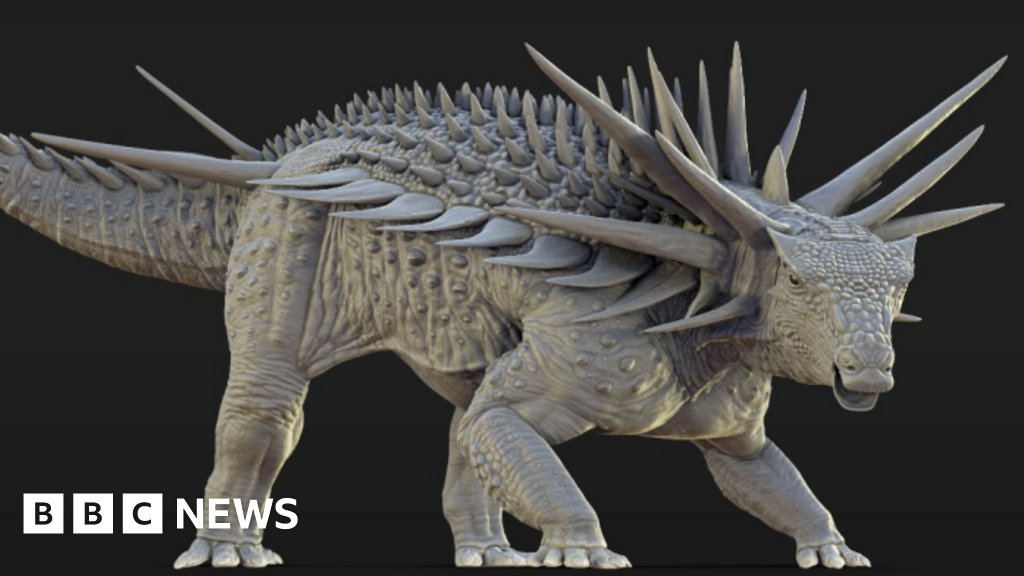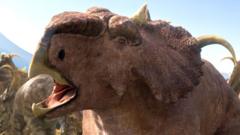'Punk rock' dinosaur with metre-long spikes discovered
Scientists have discovered a bizarre armoured dinosaur that had metre-long spikes protruding from its neck. The species, named Spicomellus afer, lived approximately 165 million years ago and represents the oldest known ankylosaur.
This extraordinary find from Morocco has astonished experts, leading to a reevaluation of the evolutionary trajectory of these prehistoric creatures.
Prof. Richard Butler from the University of Birmingham, who co-led the research, delightedly described it as the 'punk rocker' of its time due to its peculiar appearance.
Punk rock, a prominent subculture and music genre from the 1970s, is characterized by spiky hair and bold accessories — a fitting metaphor for this dinosaur's unique features.
Prof. Butler remarked, It is one of the strangest dinosaurs ever discovered, highlighting its surprising design where spikes are fused directly to the bones—a rarity among both living and extinct species.
Another researcher, Prof. Susannah Maidment from the Natural History Museum, noted that the dinosaur is covered in unusual spikes and protrusions, including a collar surrounding its neck and an adapted tail suggesting potential weaponry.
The researchers consider this find so unconventional that it could alter long-held beliefs about ankylosaurs and their evolutionary adaptations.
These dinosaurs thrived during the late Cretaceous period, between 145 to 66 million years ago. Traditionally, it was thought that they evolved basic armor to protect themselves from formidable carnivores like T. Rex. Prof. Butler expressed his surprise at the discovery: If you had asked me what I expected the oldest known ankylosaur to resemble, I would have described something simpler in terms of armor. Instead, we have an animal bristling with hedgehog-like spikes, showcasing bizarre armor far beyond what is observed in later forms.\
Initial estimates suggest this dinosaur was about four meters long, one meter high, and weighed roughly two tonnes.
The revelation raises intriguing possibilities about ankylosaurs' evolutionary beginnings, suggesting they may have started with intricate armoring that later became simplified over millennia. Prof. Maidment speculated that these striking features may have originally served as displays, only transitioning to functional armor in response to the rise of larger predatory species.
The fossil was unearthed by a local farmer in Boulemane, Morocco, marking the first ankylosaur discovery on the African continent. Prof. Butler recalls the moment vividly: It was a jaw-dropping, spine-tingling moment, perhaps the most thrilling of my career. It was immediately evident that this creature diverged significantly from our expectations and that we had ample evidence to understand it.\”
The research spearheaded by Prof. Driss Ouarhache from Université Sidi Mohamed Ben Abdellah emphasizes not only the academic significance of the find in reshaping paleontological understanding but also its potential to propel Moroccan scientific inquiry forward.
This groundbreaking study has been published in the prestigious journal, Nature.
For a deeper insight into the excavation story, watch here.



















